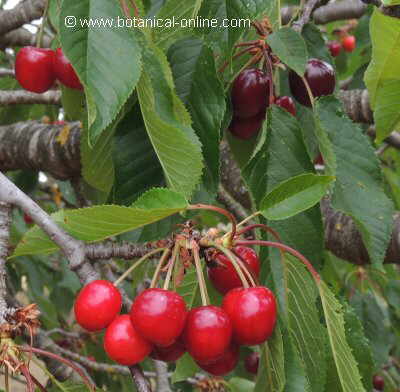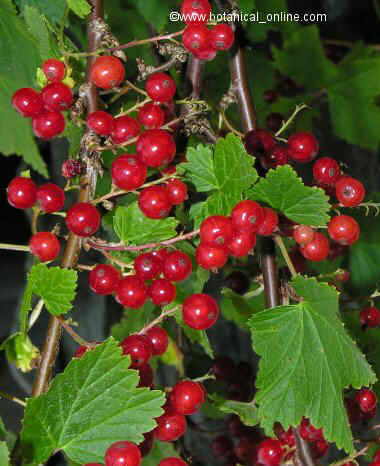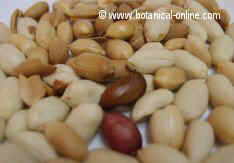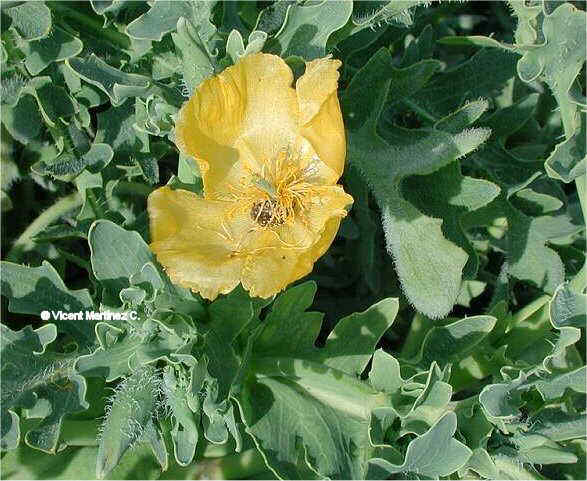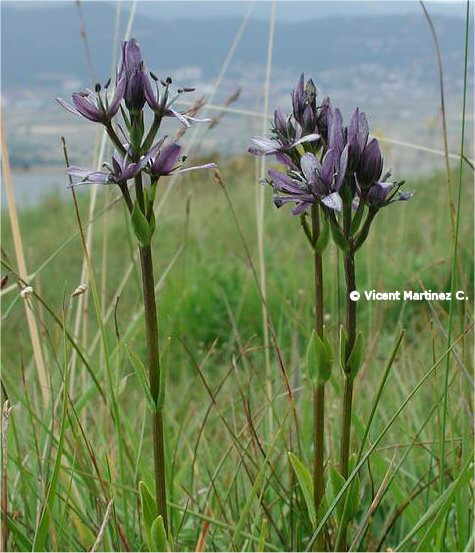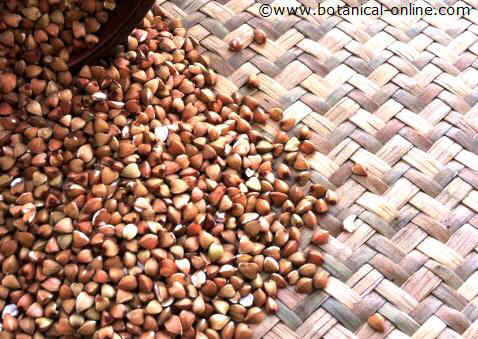Contents
MEDICINAL PROPERTIES OF CHERRY TREE
INTERNAL USE REMEDIES WITH CHERRY TREE
Cherries |
– Diuretic: It stimulates urine elimination, very useful in those cases in which it is necessary to stimulate the kidneys to increase micturition, in illnesses like: obesity, celullite, dropsy, (accumulation of liquids in the body with swelling of body tissues), edemas, kidney pain, nephritis, renal insufficiency, swollen eyes, etc. There are fundamentally two treatment types:
– Decoction of the floral peduncles or dry fruit decoction: Boil during 10 or 12 minutes 40 gr. of peduncles after having allowed them to macerate in water for 6 or 7 hours. Filter the preparation. Take three cups a day, after the main meals. It is a treatment that has a great diuretic power and it has to be used with wisdom in those people that have hypotension problems (with low blood pressure, using this treatment can lower blood pressure too much.)
– Infusion of peduncles: Carry out an infusion of a spoonful of peduncles for each cup of water, for 5 minutes. Cool and take three cups a day after the main meals.
– Antirheumatic: For its diuretic capacity it is used to help in the treatment of rheumatic illnesses: gout, arthritis, rheumatism, etc. (The same treatment previously seen)
– Circulator system: It fluidifies the blood and improves blood circulation, being very appropriate for the treatment of illnesses related with a faulty circulation: varixes, hemorrhoids, ocular pressure, etc.
– Cardiotonic: It has got cardiotonic properties, making the heart muscle to contract more powerfully, so it has been used in cases of light heart weakness that don’t require the use of foxgloves. (Digitalis sp.)
EXTERNAL USE PREPARATIONS WITH CHERRY TREE
– Skin diseases: The preparation of slighter decoctions that the one previously seen exercises a healing power on the skin, to get rid of pimples , acne and other skin disorders and favouring the wound scaring. (Boil about 80 gr. of dry peduncles in a liter of water. Cool and apply with a gauze on the affected surface)
– Emmenagogue: Decoctions of floral summits are very adequate to favour menstruation, in cases such as dysmenorrhea. It also alleviates women from premenstrual syndrome (Boil a teaspoon of floral summits for every glass of water during 10 minutes. Leave it cool and drink a couple of cups a day)
Edible properties of cherries
The fruit of the cherry tree, the cherry, is a very convenient food that should be taken in abundance in the short time in which we have it at hand, during spring time. Its little caloric power (52 calories each 100 gr.) and its richness in fibers is very useful to favor the intestinal evacuation, avoiding the constipation. In the same way, as it is very rich in vitamins and minerals (Take a look to the chart below) it is very appropriate to strengthen the organism and to avoid the spring asthenia.
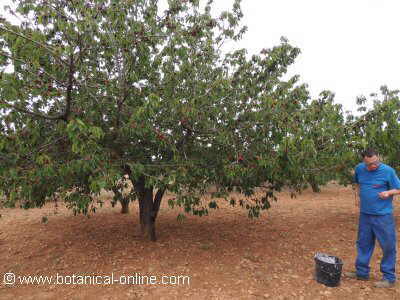
A man picking cherries
Its high potassium content makes it specially interesting in the control of the heart activity, the good state of the muscles and of the nervous system, as well as in the calcification of the bones – very useful in the treatment of osteoporosis, too- It is very advisable to undertake a cure of cherries in spring. This cure consists on eating during three days 1500 gr of cherries and three yoghurts every day.
Nutritional composition of cherries
| Approximated nutrition facts of cherry fruit per 100 gr |
| Water 82 gr Carbohydrates 35 gr Proteins 0,9 gr Fiber 1,90 gr Fat 0,17 gr Potassium 230 mg. Copper 94 mg. Manganese 63 mg. Phosphorus 20 mg. Calcium 17 mg. Vitamin C 15 mg. Vitamin B1 0.02 mg Vitamin B2 0,04 mg Vitamin B6 0,04 mg Vitamin E 0,1 mg |
Industrial uses of cherries
The wood of the cherry tree is very appropriate in turnery and joinery. If it is used for the fire, its smoke produces a very characteristic aroma.
Toxicity of cherries
The cherry tree, as the rest of trees belonging to the Prunus genus, such as the plum tree (Prunus domestica); The apricot tree (Prunus armeniaca); the peach tree (Prunus persica); or the almond tree (Prunus dulcis) contains in its seeds, flowers and leaves the cyanogenetic glycoside amygdalin.
This compound that, in the case of the almond tree, appears with a very big proportion in the seeds of the bitter almonds it is responsible for many intoxications. Amygdalin – C6H5CHCNOC12H21O10. – because of the action of the ferment emulsin, in contact with the saliva, becomes cyanhydric acid, – cyanide – a very potent poison.
In a same way cases of intoxications have been detected in animals, especially pigs that have eaten seeds, flowers or leaves of these plants.
The intoxication symptoms are the following ones: Suffocation, bad breath, vomiting, sickness, increase of the heart rhythm, respiratory failure and death.
![]() More information about cherries.
More information about cherries.

